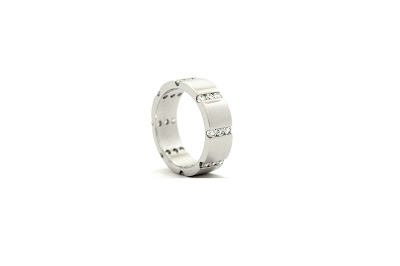Dollar prices for Gold Bullion eased down to $1820 per ounce by Thursday lunchtime in London – 1.1% off the high for the week so far – while stocks and commodities fell and government bonds rose following publication of weak European manufacturing data.
"The [gold] market is dead in this time zone," said one Gold Bullion dealer in Hong Kong this morning.
Silver Bullion prices were also steady, holding around $41.60 – 0.5% above where they started the week.
"The power of the drop from $50 [earlier in the year] still overhangs silver so we would not be surprised at another sideways month in price action," say technical analysts at Gold Bullion bank Scotia Mocatta.
Euro Gold Bullion prices meantime edged up to €1278 per ounce Thursday morning – a high for the week so far.
Eurozone manufacturing activity declined in August, according to the purchasing managers index for the 17 nation single currency area. The Eurozone PMI fell to 49.0 – down from 50.4 in July (a figure below 50 indicates contraction).
China's PMI recovered slightly to 50.9 – up from 50.7 in July – while the UK's manufacturing sector continued to contract, its PMI falling from 49.4 in July to 49.0. Similar manufacturing data for the US are due out later today.
German manufacturing PMI fell from 52 in July to 50.9 last month – its lowest level for two years. German economic growth meantime slowed to 2.7% year-on-year in the second quarter – down from 4.9% in Q1 – according to official data published Thursday.
"The recovery should continue, albeit at a slower pace," reckons Carsten Brzeski, senior economist at ING in Brussels.
"Nevertheless, the next stage of the Eurozone debt crisis will put...the German economy to the test."
Elsewhere in Europe, FT Alphaville reports on French banks' relatively high dependence on wholesale funding – with deposits making up 31% of total assets, compared to 36% for banks in Europe as a whole – which, the report says, could leave them vulnerable to a shift away from Europe by money market funds.
UBS has reportedly cut its 2012-13 forecast for French banks' earnings as a result.
"It is not a sustainable sign of faith in the region that some of the largest banks in the Eurozone, with generally sound asset quality and business models, struggle to fund themselves in public markets," says Omar Fall, equity analyst at UBS in London.
"The crisis is not over," Juergen Stark, European Central Bank executive board member, told an economic forum in Austria on Thursday morning.
"Not just in Europe is it not over, it is also not over in other regions of the world," Stark added, citing the "enormous" debt problem in the United States.
"Given the weak [US] data we've seen recently," Federal Reserve Bank of Atlanta president Dennis Lockhart said in a speech on Wednesday, "and considering the rising concern about chronic slow growth or worse, I don't think any policy option can be ruled out at the moment."
Lockhart added, however, that he is "acutely aware that pushing beyond what monetary policy can plausibly deliver runs the risk of creating new distortions and imbalances."
"The uncertainty clouding the macro outlook has lifted Gold Prices," says a research note from Barclays Capital on Thursday.
"As long as it persists and investors remain responsive to gold, barring short term corrections, prices are set to venture further into uncharted territory."
Gold Prices rose over 11% in US Dollar terms last month – despite Congress reaching an agreement on the debt ceiling at the start of August – with many gold buyers choosing physical Gold Bullion.
"Looking at the physical market, last month's sales of gold and silver coins by the US Mint were strong," notes one Gold Bullion dealer here in London.
"Its year-to-date gold sales [though] are lower than last year, perhaps indicating a reduced degree of fear amongst buyers this year."
UBS, however, last month noted a "growing preference towards Allocated Gold" – gold held securely in a professional vault on behalf of its owner, rather than stored in its owner's residence or safe deposit box.
Allocated Gold providers BullionVault saw the volume of gold owned by its users grow 6.7% in August, hitting a new record of 24.3 tonnes.
By value, client-gold holdings at BullionVault rose by 20% in August to stand above $1.42 billion at today's AM Gold Fix.
Thinking of Buying Gold?...

















